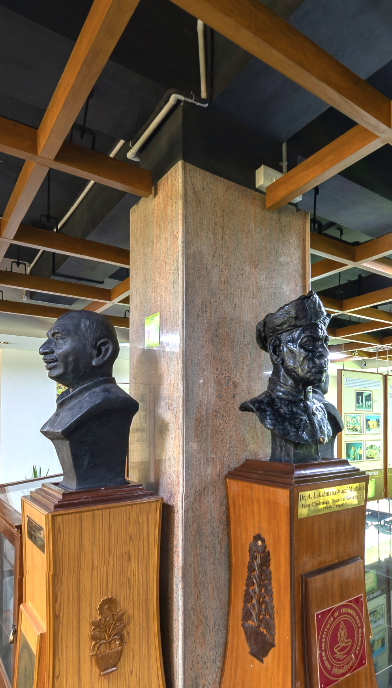Garden Lizard (Calotes versicolor) (male)

- Photographs
Garden Lizard (Calotes versicolor) (male)
Yellow-tailed Ashy Skimmer (Potamarcha congener) (female)
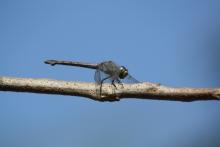
- Photographs , Flora & Fauna
The name ‘Yellow-tailed Ashy Skimmer’ is most aptly descriptive of the male Potamarcha congener. The ‘yellow tail’ refers to the predominantly yellow abdomen, which bears black markings. The ‘ashy’ refers to the thorax, which appears to be invariably pruinosed (frosted in appearance). Potamarcha congener is commonly known as Blue Percher, Yellow-tailed Ashy Skimmer, Blue Pursuer and Blue Chaser.
Termites nuptial flight emergence (Order Isoptera)
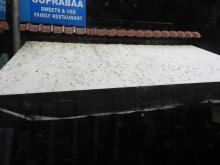
- Photographs , Flora & Fauna
Although termites are often called "white ants", they are not ants, and are not closely related to ants. Like ants and some bees and wasps from the separate order Hymenoptera, termites divide as "workers" and "soldiers" that are usually sterile. All colonies have fertile males called "kings" and one or more fertile females called "queens". Termites mostly feed on dead plant material and cellulose, generally in the form of wood, leaf litter, soil, or animal dung. Most termites construct underground colonies rather than multifunctional nests and mounds. Once a year millions of termites explode…
Yellow Bush Dart (Copera marginipes)
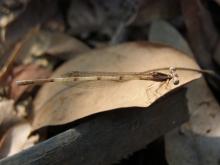
- Photographs , Flora & Fauna
The Copera marginipes is commonly known as Yellow Bush Dart, Rimmed Feather Leg and Yellow Feather Leg. The general impression of an adult male Copera marginipes is of an insect with yellow legs, a dark, slim, white-tipped abdomen and a head and thorax with light markings. A closer examination will reveal the light marks to be yellow. The female insect differs in having a relatively stout abdomen and in being duller. The colour is brown of various shades. Both male and female individuals have some black markings. Copera marginipes breeds both in still water (ponds, marshes) and in streams.
Whip scorpions (Thelyphonida or Uropygi)
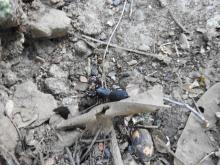
- Photographs , Flora & Fauna
Thelyphonida is an arachnid order comprising invertebrates commonly known as whip scorpions or vinegaroons. They are often called uropygids in the scientific community based on an alternative name for the order, Uropygi. The name "whip scorpion" refers to their resemblance to true scorpions and possession of a whiplike tail, and "vinegaroon" refers to their ability when attacked to discharge an offensive, vinegar-smelling liquid, which contains acetic acid. Whip scorpions range from 25 to 85 mm (1.0 to 3.3 in) in length, with most species having a body no longer than 30 mm (1.2 in). The…
Black Marsh Skimmer (Indothemis carnatica) (female)
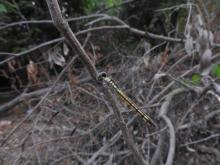
- Photographs , Flora & Fauna
Indothemis carnatica is also known as Black Marsh Skimmer, Black Scrub Glider and Light-tipped Demon. The ‘standard’ male is a black insect with clear wings and white anal appendages. Pruinosed (frosted in appearance) individuals look positively indigo, whereas immature males have yellow marks on the sides of the abdomen.
Termites nuptial flight emergence (Order Isoptera)
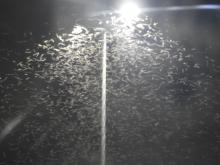
- Photographs , Flora & Fauna
Although termites are often called "white ants", they are not ants, and are not closely related to ants. Like ants and some bees and wasps from the separate order Hymenoptera, termites divide as "workers" and "soldiers" that are usually sterile. All colonies have fertile males called "kings" and one or more fertile females called "queens". Termites mostly feed on dead plant material and cellulose, generally in the form of wood, leaf litter, soil, or animal dung. Most termites construct underground colonies rather than multifunctional nests and mounds. Once a year millions of termites explode…
Green-striped Slender Dartlet (Aciagrion occidentale) (male)
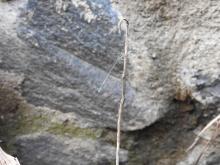
- Photographs , Flora & Fauna
The elegant shape of the abdomen and the manner in which it is held seem to be typical of the genus Aciagrion and are easy to recognise. A triangular black spot on the eighth abdominal segment makes it easy to identify. In the female, the blue of the thorax is replaced with yellowish-green. The abdomen is very slim. About one century back, Fraser noted that the species was very common along the eastern foot-hills of the Western Ghats, particularly in the early months of the year. According to him it migrates by exploiting its light weight to rise high in the air and using air-currents.
Marbled Balloon Frog (Uperodon systoma)
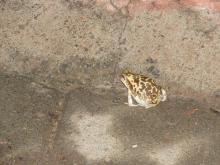
- Photographs , Flora & Fauna
As the common names suggest, Uperodon systoma have a very stout appearance with a relatively small head. They grow up to 64 mm (2.5 in). Uperodon systoma lack teeth. This unusual feature is probably related to their diet that (after metamorphosis) consists mainly of termites and ants, with other insects appearing in smaller numbers. Uperodon systoma is a species that buries itself in soil. These frogs have been observed in a number of habitats, such as dry forests, plains, gardens, and agricultural areas. Adults are only seen during the summer monsoons; otherwise they retreat into the soil.…
Scarlet Skimmer (Crocothemis servilia) (female)
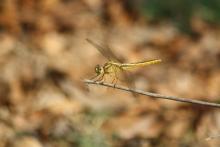
- Photographs , Flora & Fauna
In this species, the redness is entire, extending from the ‘face’ and eyes to the anal appendages. Even the veins of the wings, close to the bases, are red. The bases of the hind wings have amber patches. The pterostigmata are ochreous. A black stripe runs down the centre of the ‘back’, along the top of the abdomen. Females and young males are straw-yellow versions of the males. The red is replaced everywhere by yellow. The wing patches are visible as a network of golden yellow veins. Crocothemis servilia is more commonly known as Red Hot Chili Pepper, Ruddy Marsh Skimmer and Oriental…
Yellow Bush Dart (Copera marginipes)
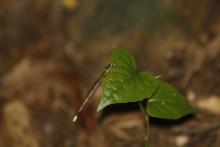
- Photographs , Flora & Fauna
The Copera marginipes is commonly known as Yellow Bush Dart, Rimmed Feather Leg and Yellow Feather Leg. The general impression of an adult male Copera marginipes is of an insect with yellow legs, a dark, slim, white-tipped abdomen and a head and thorax with light markings. A closer examination will reveal the light marks to be yellow. The female insect differs in having a relatively stout abdomen and in being duller. The colour is brown of various shades. Both male and female individuals have some black markings. Copera marginipes breeds both in still water (ponds, marshes) and in streams.
Malayan Lily-Squatter (Paracercion malayanum) (male)
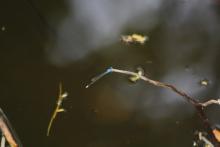
- Photographs , Flora & Fauna
The male Paracercion malayanum is a blue-and-black damselfly. But young males of Paracercion malayanum are reported to be lighter blue compared with the older ones, and so colour may not be a reliable means of distinguishing the species. Female Paracercion malayanum are similar to the males, with the blue being mostly replaced with greenish yellow. However, the sides of the thorax and abdomen seem to be light blue, this colour showing quite clearly in good light. The common name of the species is derived from the habit of this damselfly of sitting on lily pads. This habit is indicative, but I…
Ditch Jewel (Brachythemis contaminata) (female)
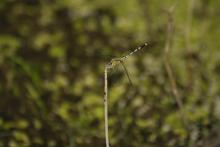
- Photographs , Flora & Fauna
Brachythemis contaminata is commonly known as Common Amber Wing, Ditch Jewel, Orange-winged Groundling or Asian Groundling. The male dragonfly of this species has a large reddish orange patch on each wing. The wing-spots are also reddish. The body is also suffused with the conspicuous reddish orange of the wings, sometimes to such an extent that the underlying longitudinal stripes are not visible. The female is duller, being brownish yellow in colour. A black series of dashes runs along the upper surface of the abdomen. This line is flanked by other, lighter lines symmetrically. Although…
Coral-tailed Cloudwing (Tholymis tillarga) (male)
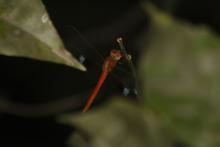
- Photographs , Flora & Fauna
The common names of this dragonfly are Evening Skimmer, Foggy-winged Twister, Coral-tailed Cloud Wing, Old World Twister, Crepuscular Darter and White-burned Dusk Hawk. The adult male Tholymis tillarga is as much carrot-orange as it is scarlet. Its distinguishing features are the unique marks on its hind wings: There is a dark spot in the middle of each hind wing, and adjoining this spot, towards the tip, is a milky white patch. These marks are conspicuous when the insect patrols over a body of water. The female and the young male are ochre in colour. The hind wings of the female do not have…
Blue Grass Dart (Pseudagrion microcephalum) (male)
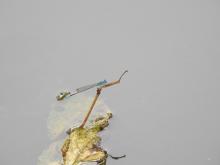
- Photographs , Flora & Fauna
The male Pseudagrion microcephalum is distinguished from the other Pseudagrion damselfly (Pseudagrion decorum) by a dorsal mark that can be described as ‘goblet’ or ‘thistle-head’ shaped. When identifying the duller female damselflies, a clue is offered by the proximity of a more distinctively marked, more easily distinguished male form. This species is known to migrate in vast numbers during the months of October and September.
- Contribute
to the Centre -
Monetary
Support - Digital
Material

